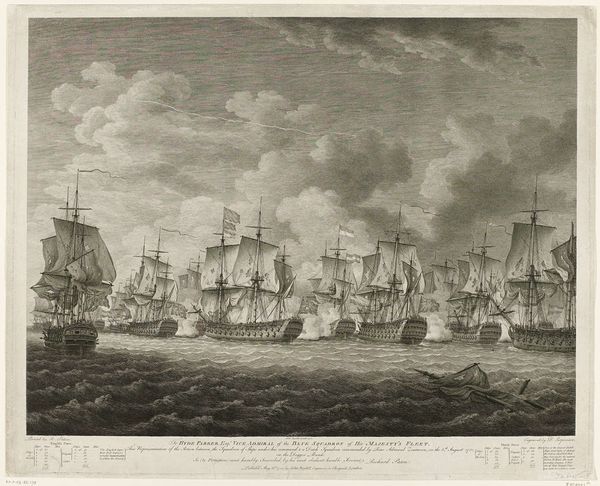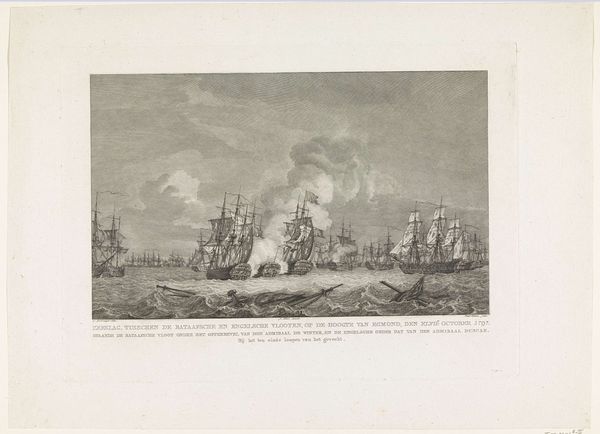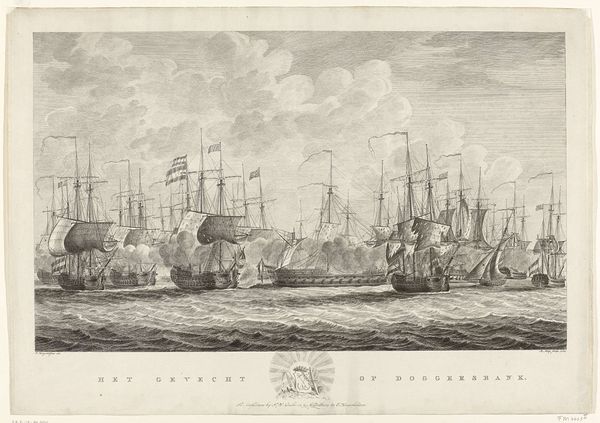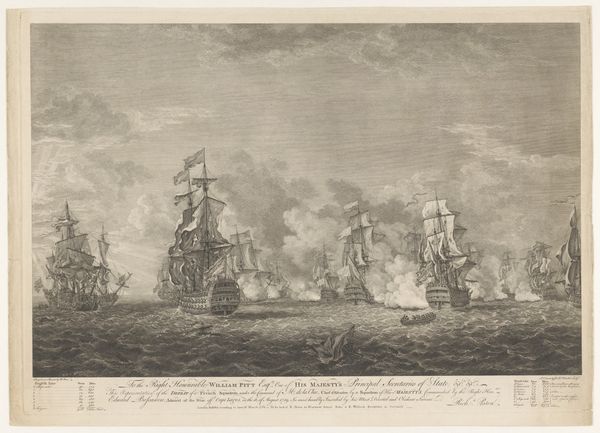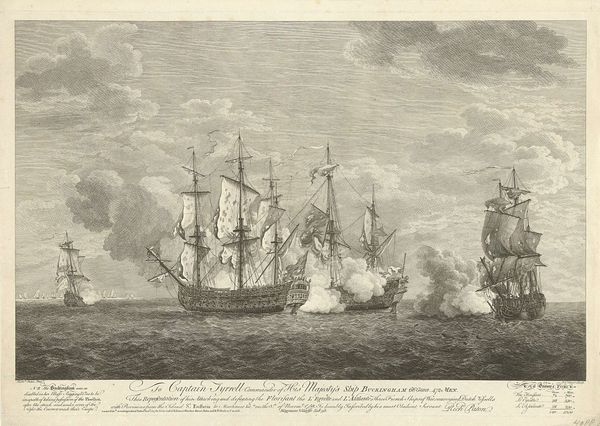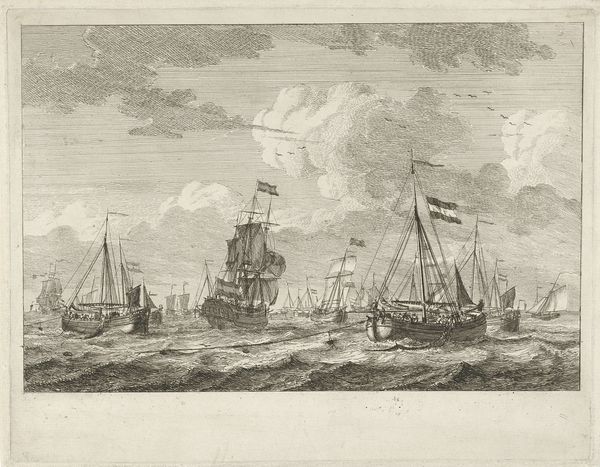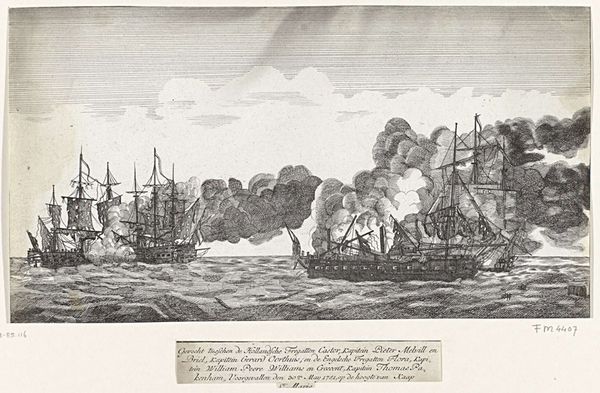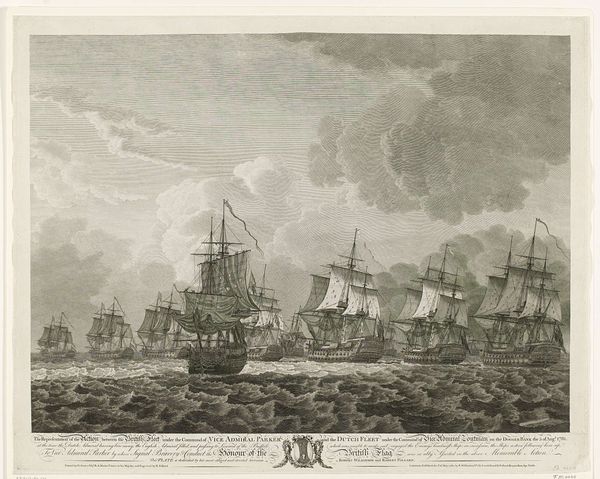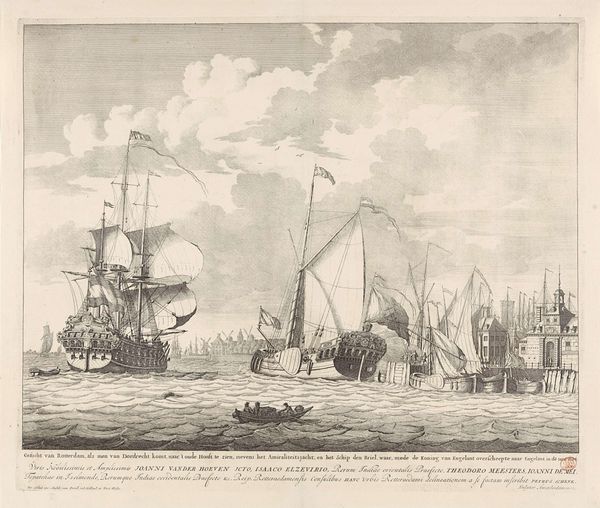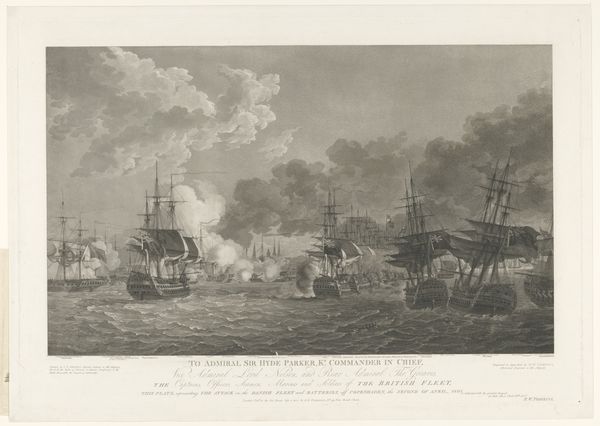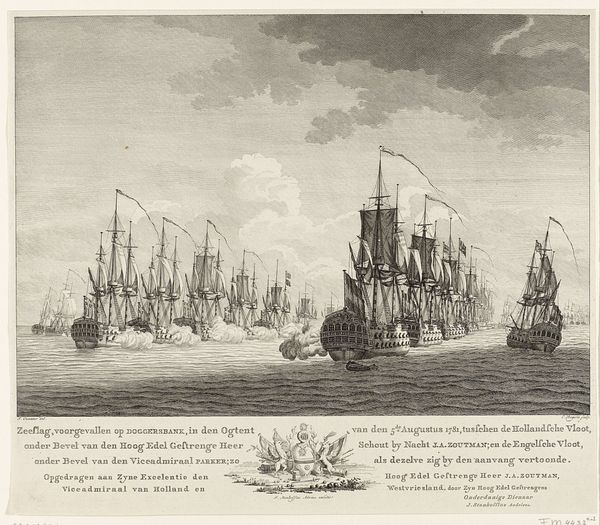
print, engraving
#
neoclacissism
# print
#
landscape
#
history-painting
#
engraving
#
realism
Dimensions: height 305 mm, width 415 mm
Copyright: Rijks Museum: Open Domain
Curator: This engraving by Reinier Vinkeles, created in 1798, captures the naval Battle of Camperdown which occurred the year prior. What's your first reaction? Editor: A churning mass of line work, isn’t it? The grey palette, combined with the sheer number of ships depicted, conveys chaos—a miasma of timber, canvas, and probably quite a lot of terrified humanity. Curator: Precisely. Note how Vinkeles, though working in a relatively small format print, orchestrates depth. The careful rendering of smoke helps create visual layers. Editor: True. But, to me, that smoke is almost romanticized. Think of the labor that went into producing not just the ships, but also maintaining and using them. Each one of these lines likely represents hours of meticulous craftsmanship and brutal work at sea. I wonder how those stories might humanize this depiction of conflict? Curator: An interesting point, yet consider how Vinkeles is embracing neoclassicism within this maritime battle scene. He masterfully balances movement and order. Despite the chaotic event, the overall composition displays balance. Editor: But that very sense of order—does it glorify the conflict by imposing aesthetic ideals? Doesn’t that negate some of the real-world cost paid for it? I would focus our attention on what materials these boats were created from: how the availability of these materials, the access to land, allowed for specific naval fleets to build ships and ultimately led to colonialization. Curator: Perhaps, but the clear, almost crystalline delineation in Vinkeles' lines provides a space for sober reflection, regardless. I believe, that this careful structuring speaks volumes about the artist's vision beyond historical events. Editor: Maybe. To me, that balance highlights the human cost through a different angle; what type of trees and who harvested those specific trees? To see the work of laborers and tradesmen through Vinkeles is important and must not be ignored. Curator: It seems we both appreciate the depth within Vinkeles' art, albeit focusing on vastly different interpretations. It's a testament to art's capability to house diverse reflections, isn't it? Editor: Absolutely, acknowledging both formal structure and tangible materials—it all fosters deeper understanding, and, most importantly, a respectful point of view.
Comments
No comments
Be the first to comment and join the conversation on the ultimate creative platform.
